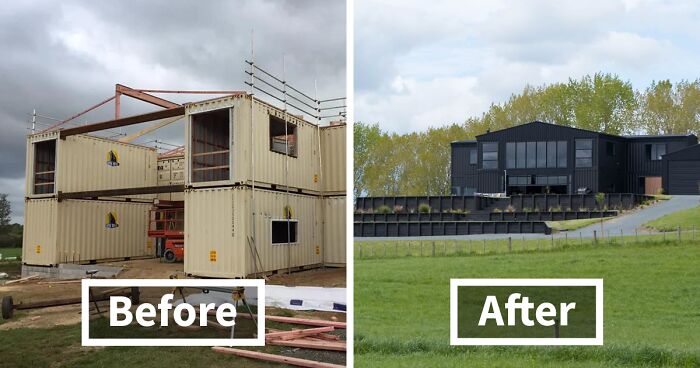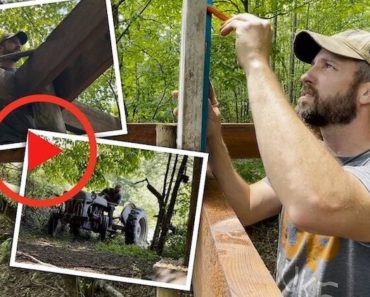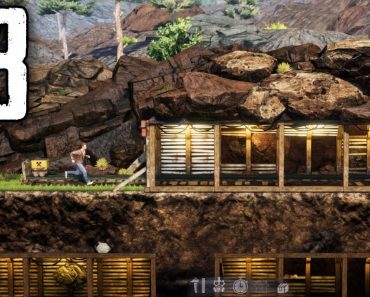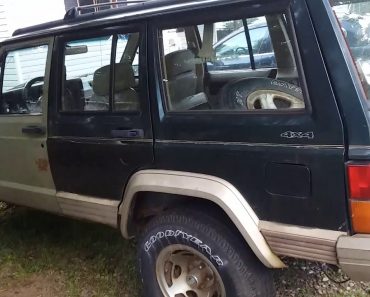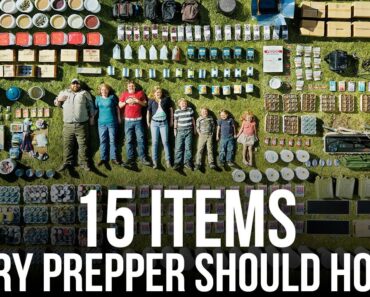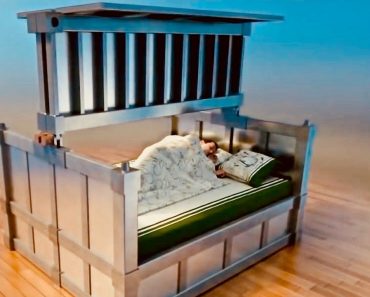Anyone in the prepping community has heard about burying a shipping container for use as an underground bunker.
Those of us who have read a little farther have realized that’s not such a great idea, as the container isn’t strong enough to support the weight of the backfill when burying it. While the corners of shipping containers are immensely strong, the sides and roof aren’t, especially when we’re talking about tons of dirt and rocks.
But that’s not to say that shipping containers are all bad. You can buy a 40′ shipping container for less than $2,000, which is a great price. That’s cheaper than you can buy a cabin kit of half the size, and you’d still have to build the cabin.
So why not buy the container anyway? Just don’t bury it. People make homes out of containers, so why can’t they also be used to make a cabin in the woods for use as a survival retreat? The inside can be finished out just like it would be for burying, without bothering to put it underground.
I’m not convinced that bunkers are a good idea for prepping anyway. The notion of bunkers started back in the Middle Ages, with the need for a secure area to hide from catapults and trebuchets’ effects. The idea regained popularity, along with a facelift, in the last century, because of bombardment by aircraft. Since dropping a bomb from an airplane is just a bigger version of shooting a cannon shell, the same bunker protects from both.
As we moved out of World War I and II, we entered the Cold War with its nuclear arms race. This caused people and institutions to find places that could be used for fallout shelters. I can still remember the drills we did in elementary school, going from our classroom to our fallout shelter in the basement.
But World War II and the Cold War are both things of the past. So I have to ask the question; what does anyone need a bunker for today? Most people talking about bunkers are planning on using them for protection against social unrest, from what I’ve seen. While I can understand and agree with that need, I’m not sure that bunkers are the way to get it. I’m not too fond of the idea of being trapped inside a bunker, unable to see what potential attackers are doing outside.
Of course, there are plenty of people who still think bunkers are a good idea. Suppose you’re one of them, more power to you. I’m not trying to dictate the survival philosophy you use; I’m just explaining my reasoning. There are always multiple ways of dealing with any survival situation.
There are several advantages that I can see using a container for a survival retreat:
- First, the basic structure is already built, shortening the construction of the retreat.
- As best as I can tell, it’s about the cheapest way of coming up with the basic structure, other than scavenging materials. So it will save money over many other options.
- Shipping containers are secure, being made of steel and having four lock bars on end.
- While the 14 ga. corrugated steel used for the sides isn’t thick enough to stop anything more than a .22LR. Most people don’t know that. So they may not shoot, thinking it would be a waste of time.
- The shipping container is water-resistant, solving the problem of how to keep the rain out.
- Being ready-made, you can have the container delivered to your site, then start staying in it right away, even while working on it.
- The container is heavy enough not to be easily damaged by driving a vehicle into it.
That is not to say that using a shipping container for a survival retreat is ideal; it isn’t. Being metal, the shipping container will tend to be hot, which will make it uncomfortable in hot climates, especially in the summertime. The doors are not conveniently located, and there are no windows or vents. But those are things to work around, not deal killers.
Making a Survival Shelter Out of a Shipping Container
While a plain shipping container can be used as a shelter, it’s rather doubtful that anyone would enjoy staying in that. It would be a good idea to make some modifications. Of course, how extensive those modifications are and how long it takes to make them will depend on how much money and time are available to invest in the shelter.
How Big a Container Should You Buy?
Shipping containers come in two basic sizes: 20-foot and 40-foot. Both sizes are eight feet wide and eight and a half feet tall unless you buy what is known as a “high cube” container, which will be 9.5 feet tall.
Considering the cost difference, it’s more cost-effective to buy a 40-foot container than two 20 foot ones. However, two or even three separate containers provide you with more flexibility in your shelter’s design. They can be placed opposite each other, giving you a patio space in the middle, which can be used as the main living area.
Don’t just place the container on the ground if you can avoid it. While there are dry places and the ground is hard enough that the container won’t sink in, that’s not something you want to count on. If the container were to sink into the ground, jacking it out would be difficult. If it sinks unevenly so that the doors’ bottoms are below ground level, it will make the shelter unusable until the doors were dugout.
The solution is to put in a footer. That doesn’t have to be all the way around, as the container sits on the corners. So dig down and pour a two-foot by nine-foot reinforced concrete footer at each end. Whoever delivers the container will set them down accurately, so they should get the ends on those footers.
Do You Need a Roof?
The container itself is water-resistant, so a roof shouldn’t be necessary. However, the containers we’re talking about here are used ones. Chances are there will be some damage, and there might be some rusting. That could lead to a leaky roof if ignored.
The easiest way to put a roof on a container is to make what’s known as a shed roof. That’s a roof that slants to one side, usually the backside, rather than one where there are two sloping sides. A roof of this sort is faster and easier to build and will require a little less material. For roof covering, the least expensive way to go is with roll roofing material. That’s not only cheaper but faster and easier to install.
While roofing over the container, consider building an awning extending out from the side of the container. That will provide a shaded, outdoor living area, making it so that it isn’t necessary to be inside the container all the time. As this is a survival retreat, you may want to do most of your cooking outdoors, under this awning, as well as a host of other survival tasks.
Typically, this would be framed out with wood, covered with sheathing, and then shingles. But if money is an issue, the awning can be framed out and covered by a heavy-duty tarp. PVC pipe works well for this, as the pipe can be curved, making a curved room that will help stretch the trap, ensuring that it won’t flap in the wind.
That brings up an important point about using tarps. The way to keep tarps from becoming ruined in the wind is to stretch them and tie them down to the point where they won’t be flapping in the wind. That might require adding additional grommets. But it’s the flapping that causes them to be destroyed.
In the case where two containers are being used, the awning can be stretched between them, making a nice outdoor living area while providing roofs over the doors to both containers. Either way, make sure that you set up rainwater capture from your roof.
Windows and Doors
One of the biggest questions to ask yourself is whether or not you want any windows and doors. On one hand, adding them in makes the shelter much more livable. But on the other, it’s all but impossible to add them in without reducing your shelter’s security. While the container’s built-in doors are pretty secure, it’s doubtful that anything you put in will be entirely safe.
Commercial steel doors, used on warehouses and other industrial buildings, are much more secure than anything you can buy for a home. They also come in a steel frame, which makes them considerably harder to breakthrough. Although substantially more expensive, if you’re concerned about security, that’s the way to go.
Don’t dismiss the idea of making your own steel door. If you have a welder and some experience using it, you can build one out of standard steel stock. They do this regularly in Mexico, making some solid, secure, and also attractive doors. Those same tubes and profiles are available here in the US, although they can be a bit hard to find.
Since your shelter may very well be left sitting unoccupied while you are away, I’d recommend making it extremely secure. That includes putting a bar over the door, with quality locks at both ends. The same bar can be moved to the inside, as added security for the door when you are there.
Windows are essential so that you can have light inside the shelter. But you’ll get more light from skylights or solar tubes than you will from standard windows. Ensure that they are covered by some bars so that nobody gets the idea of breaking in through the roof.
For that matter, any windows should have burglar bars installed over them to keep people from breaking into the shelter. It would also be a good idea to have steel shutters which can be put into place from the inside, in the case of a firefight.
Plumbing, the Big Challenge
The biggest problem for most people is putting plumbing into their shelter. Before starting, you’ll need to make some decisions about what exactly you want. Putting an outhouse is much easier than setting up indoor plumbing and requires less water. You don’t save yourself digging by putting in indoor plumbing either, as you’ll have to have some septic tank and leech field to go with it.
Properly built, preferably out of cinder block, the outhouse can also serve as a bathing room, allowing your family to take sponge baths from a bucket. While that may not be as satisfying as a nice hot shower, you’re probably going to have to conserve water.
Keeping your water usage outdoors will make things much easier, although not as pleasant as a modern camper. If you decide to put in indoor plumbing, I’d recommend taking some time to look at how it is done in those campers. The systems used in them are designed for minimal water usage, making them more or less ideal for a survival retreat.
Finishing Out the Shelter
Whatever you do, I’d highly recommend insulating the container’s walls and roof. This will help keep in the heat in the wintertime and keep out the heat in the summer. You could use either Styrofoam panel insulation or spray in. The Styrofoam will be cheaper, but it’s easier to ensure no areas are missed with the spray in.
Depending on the size of your container(s) and how many people will be staying in it, you should probably break it up into rooms. Privacy is going to be a big issue, especially for married couples. You’ll also want a separate storage room, perhaps at the end of the container.
One possibility is to lay out a 40′ container so that the door end is the storage room. Then cut the rest into three basic areas: two bedrooms and living space between them. One bedroom can be for mom and dad, while the other has bunks installed for the kids. The main entry door would be installed in the living area, heading out to the patio area.
Whatever you do, remember that this isn’t your only survival project. You should be able to build a reasonably nice shelter for under $5,000, especially if you keep your eyes open for sales and/or used material you can get for free. But it’s also easy to spend as much as $50,000 fixing up a container home if you’re not careful. Make yourself a plan and stick with it as much as possible so that your family’s survival shelter will meet your needs without becoming overly burdensome.


